

Problem Solving Agents in Artificial Intelligence
In this post, we will talk about Problem Solving agents in Artificial Intelligence, which are sort of goal-based agents. Because the straight mapping from states to actions of a basic reflex agent is too vast to retain for a complex environment, we utilize goal-based agents that may consider future actions and the desirability of outcomes.
You Will Learn
Problem Solving Agents
Problem Solving Agents decide what to do by finding a sequence of actions that leads to a desirable state or solution.
An agent may need to plan when the best course of action is not immediately visible. They may need to think through a series of moves that will lead them to their goal state. Such an agent is known as a problem solving agent , and the computation it does is known as a search .
The problem solving agent follows this four phase problem solving process:
- Goal Formulation: This is the first and most basic phase in problem solving. It arranges specific steps to establish a target/goal that demands some activity to reach it. AI agents are now used to formulate goals.
- Problem Formulation: It is one of the fundamental steps in problem-solving that determines what action should be taken to reach the goal.
- Search: After the Goal and Problem Formulation, the agent simulates sequences of actions and has to look for a sequence of actions that reaches the goal. This process is called search, and the sequence is called a solution . The agent might have to simulate multiple sequences that do not reach the goal, but eventually, it will find a solution, or it will find that no solution is possible. A search algorithm takes a problem as input and outputs a sequence of actions.
- Execution: After the search phase, the agent can now execute the actions that are recommended by the search algorithm, one at a time. This final stage is known as the execution phase.
Problems and Solution
Before we move into the problem formulation phase, we must first define a problem in terms of problem solving agents.
A formal definition of a problem consists of five components:
Initial State
Transition model.
It is the agent’s starting state or initial step towards its goal. For example, if a taxi agent needs to travel to a location(B), but the taxi is already at location(A), the problem’s initial state would be the location (A).
It is a description of the possible actions that the agent can take. Given a state s, Actions ( s ) returns the actions that can be executed in s. Each of these actions is said to be appropriate in s.
It describes what each action does. It is specified by a function Result ( s, a ) that returns the state that results from doing action an in state s.
The initial state, actions, and transition model together define the state space of a problem, a set of all states reachable from the initial state by any sequence of actions. The state space forms a graph in which the nodes are states, and the links between the nodes are actions.
It determines if the given state is a goal state. Sometimes there is an explicit list of potential goal states, and the test merely verifies whether the provided state is one of them. The goal is sometimes expressed via an abstract attribute rather than an explicitly enumerated set of conditions.
It assigns a numerical cost to each path that leads to the goal. The problem solving agents choose a cost function that matches its performance measure. Remember that the optimal solution has the lowest path cost of all the solutions .
Example Problems
The problem solving approach has been used in a wide range of work contexts. There are two kinds of problem approaches
- Standardized/ Toy Problem: Its purpose is to demonstrate or practice various problem solving techniques. It can be described concisely and precisely, making it appropriate as a benchmark for academics to compare the performance of algorithms.
- Real-world Problems: It is real-world problems that need solutions. It does not rely on descriptions, unlike a toy problem, yet we can have a basic description of the issue.
Some Standardized/Toy Problems
Vacuum world problem.
Let us take a vacuum cleaner agent and it can move left or right and its jump is to suck up the dirt from the floor.
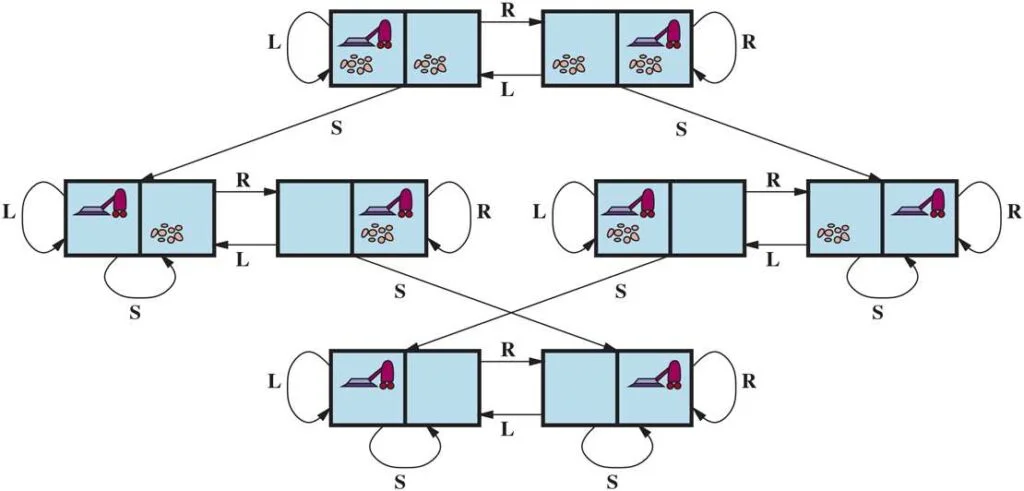
The vacuum world’s problem can be stated as follows:
States: A world state specifies which objects are housed in which cells. The objects in the vacuum world are the agent and any dirt. The agent can be in either of the two cells in the simple two-cell version, and each call can include dirt or not, therefore there are 2×2×2 = 8 states. A vacuum environment with n cells has n×2 n states in general.
Initial State: Any state can be specified as the starting point.
Actions: We defined three actions in the two-cell world: sucking, moving left, and moving right. More movement activities are required in a two-dimensional multi-cell world.
Transition Model: Suck cleans the agent’s cell of any filth; Forward moves the agent one cell forward in the direction it is facing unless it meets a wall, in which case the action has no effect. Backward moves the agent in the opposite direction, whilst TurnRight and TurnLeft rotate it by 90°.
Goal States: The states in which every cell is clean.
Action Cost: Each action costs 1.
8 Puzzle Problem
In a sliding-tile puzzle , a number of tiles (sometimes called blocks or pieces) are arranged in a grid with one or more blank spaces so that some of the tiles can slide into the blank space. One variant is the Rush Hour puzzle, in which cars and trucks slide around a 6 x 6 grid in an attempt to free a car from the traffic jam. Perhaps the best-known variant is the 8- puzzle (see Figure below ), which consists of a 3 x 3 grid with eight numbered tiles and one blank space, and the 15-puzzle on a 4 x 4 grid. The object is to reach a specified goal state, such as the one shown on the right of the figure. The standard formulation of the 8 puzzles is as follows:
STATES : A state description specifies the location of each of the tiles.
INITIAL STATE : Any state can be designated as the initial state. (Note that a parity property partitions the state space—any given goal can be reached from exactly half of the possible initial states.)
ACTIONS : While in the physical world it is a tile that slides, the simplest way of describing action is to think of the blank space moving Left , Right , Up , or Down . If the blank is at an edge or corner then not all actions will be applicable.
TRANSITION MODEL : Maps a state and action to a resulting state; for example, if we apply Left to the start state in the Figure below, the resulting state has the 5 and the blank switched.

GOAL STATE : It identifies whether we have reached the correct goal state. Although any state could be the goal, we typically specify a state with the numbers in order, as in the Figure above.
ACTION COST : Each action costs 1.
You Might Like:
- Agents in Artificial Intelligence
Types of Environments in Artificial Intelligence
- Understanding PEAS in Artificial Intelligence
- River Crossing Puzzle | Farmer, Wolf, Goat and Cabbage
Share Article:
Digital image processing: all you need to know.
- Data Science
- Data Analysis
- Data Visualization
- Machine Learning
- Deep Learning
- Computer Vision
- Artificial Intelligence
- AI ML DS Interview Series
- AI ML DS Projects series
- Data Engineering
- Web Scrapping
- Artificial Intelligence (AI) Algorithms
- AO* algorithm - Artificial intelligence
- What is Artificial General Intelligence (AGI)?
- Turing Test in Artificial Intelligence
- Artificial Intelligence | An Introduction
- Artificial Intelligence - Boon or Bane
- What is Artificial Intelligence?
- Explainable Artificial Intelligence(XAI)
- Game Playing in Artificial Intelligence
- Emergence Of Artificial Intelligence
- Impact and Example of Artificial Intelligence
- Types of Artificial Intelligence
- Advantages and Disadvantage of Artificial Intelligence
- Artificial Intelligence in NASA and DARPA in 2000s
- Problem Solving in Artificial Intelligence
- What is Artificial Narrow Intelligence (ANI)?
- Artificial Intelligence - Terminology
- Chinese Room Argument in Artificial Intelligence
- Artificial Intelligence in Robotics
Agents in Artificial Intelligence
In artificial intelligence, an agent is a computer program or system that is designed to perceive its environment, make decisions and take actions to achieve a specific goal or set of goals. The agent operates autonomously, meaning it is not directly controlled by a human operator.
Agents can be classified into different types based on their characteristics, such as whether they are reactive or proactive, whether they have a fixed or dynamic environment, and whether they are single or multi-agent systems.
- Reactive agents are those that respond to immediate stimuli from their environment and take actions based on those stimuli. Proactive agents, on the other hand, take initiative and plan ahead to achieve their goals. The environment in which an agent operates can also be fixed or dynamic. Fixed environments have a static set of rules that do not change, while dynamic environments are constantly changing and require agents to adapt to new situations.
- Multi-agent systems involve multiple agents working together to achieve a common goal. These agents may have to coordinate their actions and communicate with each other to achieve their objectives. Agents are used in a variety of applications, including robotics, gaming, and intelligent systems. They can be implemented using different programming languages and techniques, including machine learning and natural language processing.
Artificial intelligence is defined as the study of rational agents. A rational agent could be anything that makes decisions, such as a person, firm, machine, or software. It carries out an action with the best outcome after considering past and current percepts(agent’s perceptual inputs at a given instance). An AI system is composed of an agent and its environment . The agents act in their environment. The environment may contain other agents.
An agent is anything that can be viewed as:
- Perceiving its environment through sensors and
- Acting upon that environment through actuators
Note : Every agent can perceive its own actions (but not always the effects).

Interaction of Agents with the Environment
Structure of an AI Agent
To understand the structure of Intelligent Agents, we should be familiar with Architecture and Agent programs. Architecture is the machinery that the agent executes on. It is a device with sensors and actuators, for example, a robotic car, a camera, and a PC. An agent program is an implementation of an agent function. An agent function is a map from the percept sequence(history of all that an agent has perceived to date) to an action.
Agent = Architecture + Agent Program
There are many examples of agents in artificial intelligence. Here are a few:
- Intelligent personal assistants: These are agents that are designed to help users with various tasks, such as scheduling appointments, sending messages, and setting reminders. Examples of intelligent personal assistants include Siri, Alexa, and Google Assistant.
- Autonomous robots: These are agents that are designed to operate autonomously in the physical world. They can perform tasks such as cleaning, sorting, and delivering goods. Examples of autonomous robots include the Roomba vacuum cleaner and the Amazon delivery robot.
- Gaming agents: These are agents that are designed to play games, either against human opponents or other agents. Examples of gaming agents include chess-playing agents and poker-playing agents.
- Fraud detection agents: These are agents that are designed to detect fraudulent behavior in financial transactions. They can analyze patterns of behavior to identify suspicious activity and alert authorities. Examples of fraud detection agents include those used by banks and credit card companies.
- Traffic management agents: These are agents that are designed to manage traffic flow in cities. They can monitor traffic patterns, adjust traffic lights, and reroute vehicles to minimize congestion. Examples of traffic management agents include those used in smart cities around the world.
- A software agent has Keystrokes, file contents, received network packages that act as sensors and displays on the screen, files, and sent network packets acting as actuators.
- A Human-agent has eyes, ears, and other organs which act as sensors, and hands, legs, mouth, and other body parts act as actuators.
- A Robotic agent has Cameras and infrared range finders which act as sensors and various motors act as actuators.

Characteristics of an Agent
Types of Agents
Agents can be grouped into five classes based on their degree of perceived intelligence and capability :
Simple Reflex Agents
Model-Based Reflex Agents
Goal-Based Agents
Utility-Based Agents
Learning Agent
- Multi-agent systems
- Hierarchical agents
Simple reflex agents ignore the rest of the percept history and act only on the basis of the current percept . Percept history is the history of all that an agent has perceived to date. The agent function is based on the condition-action rule . A condition-action rule is a rule that maps a state i.e., a condition to an action. If the condition is true, then the action is taken, else not. This agent function only succeeds when the environment is fully observable. For simple reflex agents operating in partially observable environments, infinite loops are often unavoidable. It may be possible to escape from infinite loops if the agent can randomize its actions.
Problems with Simple reflex agents are :
- Very limited intelligence.
- No knowledge of non-perceptual parts of the state.
- Usually too big to generate and store.
- If there occurs any change in the environment, then the collection of rules needs to be updated.
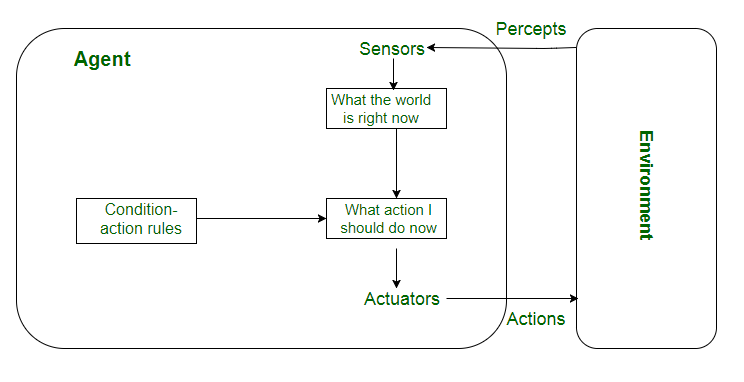
It works by finding a rule whose condition matches the current situation. A model-based agent can handle partially observable environments by the use of a model about the world. The agent has to keep track of the internal state which is adjusted by each percept and that depends on the percept history. The current state is stored inside the agent which maintains some kind of structure describing the part of the world which cannot be seen.
Updating the state requires information about:
- How the world evolves independently from the agent?
- How do the agent’s actions affect the world?

These kinds of agents take decisions based on how far they are currently from their goal (description of desirable situations). Their every action is intended to reduce their distance from the goal. This allows the agent a way to choose among multiple possibilities, selecting the one which reaches a goal state. The knowledge that supports its decisions is represented explicitly and can be modified, which makes these agents more flexible. They usually require search and planning. The goal-based agent’s behavior can easily be changed.

The agents which are developed having their end uses as building blocks are called utility-based agents. When there are multiple possible alternatives, then to decide which one is best, utility-based agents are used. They choose actions based on a preference (utility) for each state. Sometimes achieving the desired goal is not enough. We may look for a quicker, safer, cheaper trip to reach a destination. Agent happiness should be taken into consideration. Utility describes how “happy” the agent is. Because of the uncertainty in the world, a utility agent chooses the action that maximizes the expected utility. A utility function maps a state onto a real number which describes the associated degree of happiness.

A learning agent in AI is the type of agent that can learn from its past experiences or it has learning capabilities. It starts to act with basic knowledge and then is able to act and adapt automatically through learning. A learning agent has mainly four conceptual components, which are:
- Learning element: It is responsible for making improvements by learning from the environment.
- Critic: The learning element takes feedback from critics which describes how well the agent is doing with respect to a fixed performance standard.
- Performance element: It is responsible for selecting external action.
- Problem Generator: This component is responsible for suggesting actions that will lead to new and informative experiences.
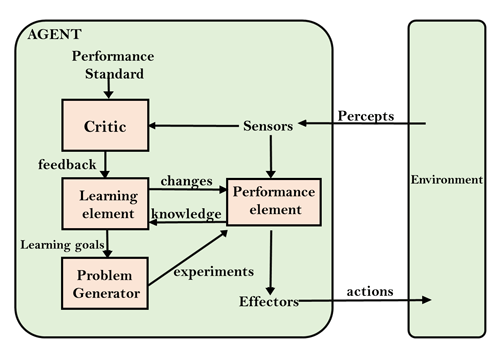
Multi-Agent Systems
These agents interact with other agents to achieve a common goal. They may have to coordinate their actions and communicate with each other to achieve their objective.
A multi-agent system (MAS) is a system composed of multiple interacting agents that are designed to work together to achieve a common goal. These agents may be autonomous or semi-autonomous and are capable of perceiving their environment, making decisions, and taking action to achieve the common objective.
MAS can be used in a variety of applications, including transportation systems, robotics, and social networks. They can help improve efficiency, reduce costs, and increase flexibility in complex systems. MAS can be classified into different types based on their characteristics, such as whether the agents have the same or different goals, whether the agents are cooperative or competitive, and whether the agents are homogeneous or heterogeneous.
- In a homogeneous MAS, all the agents have the same capabilities, goals, and behaviors.
- In contrast, in a heterogeneous MAS, the agents have different capabilities, goals, and behaviors.
This can make coordination more challenging but can also lead to more flexible and robust systems.
Cooperative MAS involves agents working together to achieve a common goal, while competitive MAS involves agents working against each other to achieve their own goals. In some cases, MAS can also involve both cooperative and competitive behavior, where agents must balance their own interests with the interests of the group.
MAS can be implemented using different techniques, such as game theory , machine learning , and agent-based modeling. Game theory is used to analyze strategic interactions between agents and predict their behavior. Machine learning is used to train agents to improve their decision-making capabilities over time. Agent-based modeling is used to simulate complex systems and study the interactions between agents.
Overall, multi-agent systems are a powerful tool in artificial intelligence that can help solve complex problems and improve efficiency in a variety of applications.
Hierarchical Agents
These agents are organized into a hierarchy, with high-level agents overseeing the behavior of lower-level agents. The high-level agents provide goals and constraints, while the low-level agents carry out specific tasks. Hierarchical agents are useful in complex environments with many tasks and sub-tasks.
- Hierarchical agents are agents that are organized into a hierarchy, with high-level agents overseeing the behavior of lower-level agents. The high-level agents provide goals and constraints, while the low-level agents carry out specific tasks. This structure allows for more efficient and organized decision-making in complex environments.
- Hierarchical agents can be implemented in a variety of applications, including robotics, manufacturing, and transportation systems. They are particularly useful in environments where there are many tasks and sub-tasks that need to be coordinated and prioritized.
- In a hierarchical agent system, the high-level agents are responsible for setting goals and constraints for the lower-level agents. These goals and constraints are typically based on the overall objective of the system. For example, in a manufacturing system, the high-level agents might set production targets for the lower-level agents based on customer demand.
- The low-level agents are responsible for carrying out specific tasks to achieve the goals set by the high-level agents. These tasks may be relatively simple or more complex, depending on the specific application. For example, in a transportation system, low-level agents might be responsible for managing traffic flow at specific intersections.
- Hierarchical agents can be organized into different levels, depending on the complexity of the system. In a simple system, there may be only two levels: high-level agents and low-level agents. In a more complex system, there may be multiple levels, with intermediate-level agents responsible for coordinating the activities of lower-level agents.
- One advantage of hierarchical agents is that they allow for more efficient use of resources. By organizing agents into a hierarchy, it is possible to allocate tasks to the agents that are best suited to carry them out, while avoiding duplication of effort. This can lead to faster, more efficient decision-making and better overall performance of the system.
Overall, hierarchical agents are a powerful tool in artificial intelligence that can help solve complex problems and improve efficiency in a variety of applications.
Uses of Agents
Agents are used in a wide range of applications in artificial intelligence, including:
- Robotics: Agents can be used to control robots and automate tasks in manufacturing, transportation, and other industries.
- Smart homes and buildings: Agents can be used to control heating, lighting, and other systems in smart homes and buildings, optimizing energy use and improving comfort.
- Transportation systems: Agents can be used to manage traffic flow, optimize routes for autonomous vehicles, and improve logistics and supply chain management.
- Healthcare: Agents can be used to monitor patients, provide personalized treatment plans, and optimize healthcare resource allocation.
- Finance: Agents can be used for automated trading, fraud detection, and risk management in the financial industry.
- Games: Agents can be used to create intelligent opponents in games and simulations, providing a more challenging and realistic experience for players.
- Natural language processing: Agents can be used for language translation, question answering, and chatbots that can communicate with users in natural language .
- Cybersecurity: Agents can be used for intrusion detection, malware analysis, and network security.
- Environmental monitoring: Agents can be used to monitor and manage natural resources, track climate change, and improve environmental sustainability.
- Social media: Agents can be used to analyze social media data, identify trends and patterns, and provide personalized recommendations to users.
Overall, agents are a versatile and powerful tool in artificial intelligence that can help solve a wide range of problems in different fields.
Please Login to comment...
Similar reads, improve your coding skills with practice.
What kind of Experience do you want to share?
Problem Solving
Definitions.
Searching is one of the classic areas of AI.
A problem is a tuple $(S, s, A, \rho, G, P)$ where
Example: A water jug problem
You have a two-gallon jug and a one-gallon jug; neither have any measuring marks on them at all. Initially both are empty. You need to get exactly one gallon into the two-gallon jug. Formally:
A graphical view of the transition function (initial state shaded, goal states outlined bold):
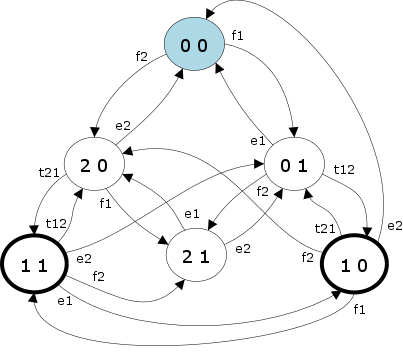
And a tabular view:
To solve this problem, an agent would start at the initial state and explore the state space by following links until it arrived in a goal state. A solution to the water jug problem is a path from the initial state to a goal state .
Example solutions
There are an infinite number of solutions. Sometimes we are interested in the solution with the smallest path cost; more on this later.
Awww Man.... Why are we studying this?
Even if they’re not completely right, there are still zillions of problems that can be formulated in problem spaces, e.g.
Problem Types
State finding vs. action sequence finding.
A fundamental distinction:
Offline vs. Online Problems
In an online problem, the agent doesn’t even know what the state space is, and has to build a model of it as it acts. In an offline problem, percepts don’t matter at all. An agent can figure out the entire action sequence before doing anything at all .
Offline Example : Vacuum World with two rooms, cleaning always works, a square once cleaned stays clean. States are 1 – 8, goal states are 1 and 5.

Sensorless (Conformant) Problems
The agent doesn’t know where it is. We can use belief states (sets of states that the agent might be in). Example from above deterministic, static, single-agent vacuum world:
Note the goal states are 1 and 5. If a state 15 was reachable, it would be a goal too.
Contingency Problems
Contingency Problem: The agent doesn’t know what effect its actions will have. This could be due to the environment being partially observable, or because of another agent. Ways to handle this:
Example: Partially observable vacuum world (meaning you don’t know the status of the other square) in which sucking in a clean square may make it dirty.
Can also model contingency problems is with "AND-OR graphs".
Example: find a winning strategy for Nim if there are only five stones in one row left. You are player square. You win if it is player circle’s turn with zero stones left.
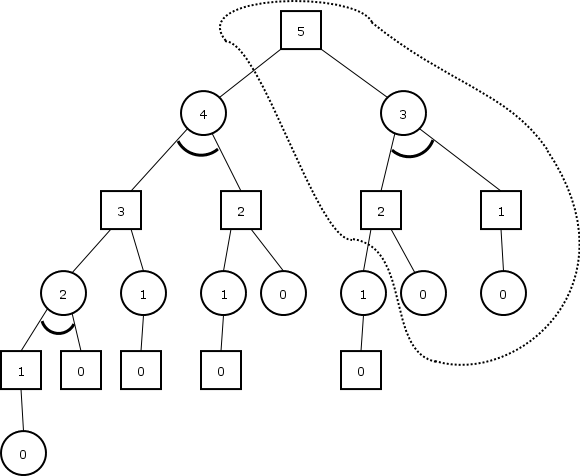
In general then, a solution is a subtree in which
If the tree has only OR nodes, then the solution is just a path.
Search Algorithms
Hey, we know what a problem is, what a problem space is, and even what a solution is, but how exactly do we search the space ? Well there are zillions of approaches:
Types of Problem Solving Tasks
Agents may be asked to be
An algorithm is
Search Trees
Example: The water jug problem with 4 and 3 gallon jugs. Cost is 1 point per gallon used when filling, 1 point to make a transfer, 5 points per gallon emptied (since it makes a mess). The search tree might start off like this:
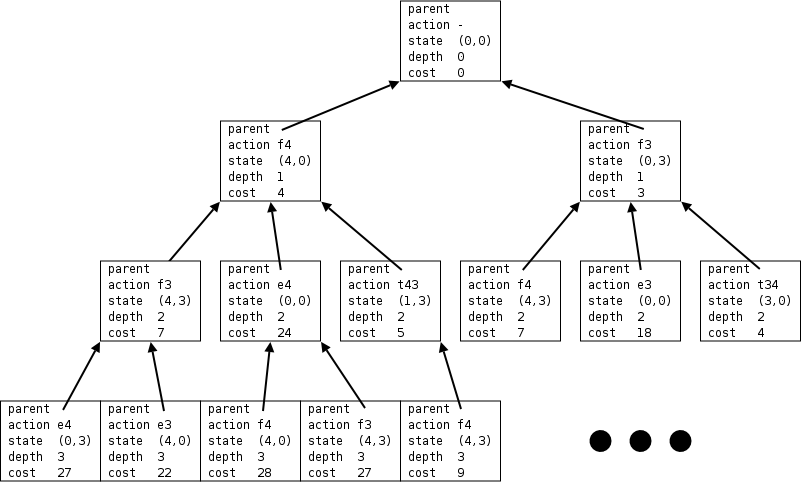
Search trees have
The complexity of most search algorithms can be written as a function of one or more of $b$, $d$ and $m$.
In general though there may be more states than there are fundamental particles in the universe. But we need to find a solution. Usually is helpful to
Problem-Solving Flowchart: A Visual Method to Find Perfect Solutions
Lucid Content
Reading time: about 7 min
“People ask me questions Lost in confusion Well, I tell them there's no problem Only solutions” —John Lennon, “Watching the Wheels”
Despite John Lennon’s lyrics, nobody is free from problems, and that’s especially true in business. Chances are that you encounter some kind of problem at work nearly every day, and maybe you’ve had to “put out a fire” before lunchtime once or twice in your career.
But perhaps what Lennon’s saying is that, no matter what comes our way, we can find solutions. How do you approach problems? Do you have a process in place to ensure that you and your co-workers come to the right solution?
In this article, we will give you some tips on how to find solutions visually through a problem-solving flowchart and other methods.
What is visual problem-solving?
If you are a literal thinker, you may think that visual problem-solving is something that your ophthalmologist does when your vision is blurry. For the rest of us, visual problem-solving involves executing the following steps in a visual way:
- Define the problem.
- Brainstorm solutions.
- Pick a solution.
- Implement solutions.
- Review the results.
How to make your problem-solving process more visual
Words pack a lot of power and are very important to how we communicate on a daily basis. Using words alone, you can brainstorm, organize data, identify problems, and come up with possible solutions. The way you write your ideas may make sense to you, but it may not be as easy for other team members to follow.
When you use flowcharts, diagrams, mind maps, and other visuals, the information is easier to digest. Your eyes dart around the page quickly gathering information, more fully engaging your brain to find patterns and make sense of the data.
Identify the problem with mind maps
So you know there is a problem that needs to be solved. Do you know what that problem is? Is there only one problem? Is the problem sum total of a bunch of smaller problems?
You need to ask these kinds of questions to be sure that you are working on the root of the issue. You don’t want to spend too much time and energy solving the wrong problem.
To help you identify the problem, use a mind map. Mind maps can help you visually brainstorm and collect ideas without a strict organization or structure. A mind map more closely aligns with the way a lot of our brains work—participants can bounce from one thought to the next defining the relationships as they go.
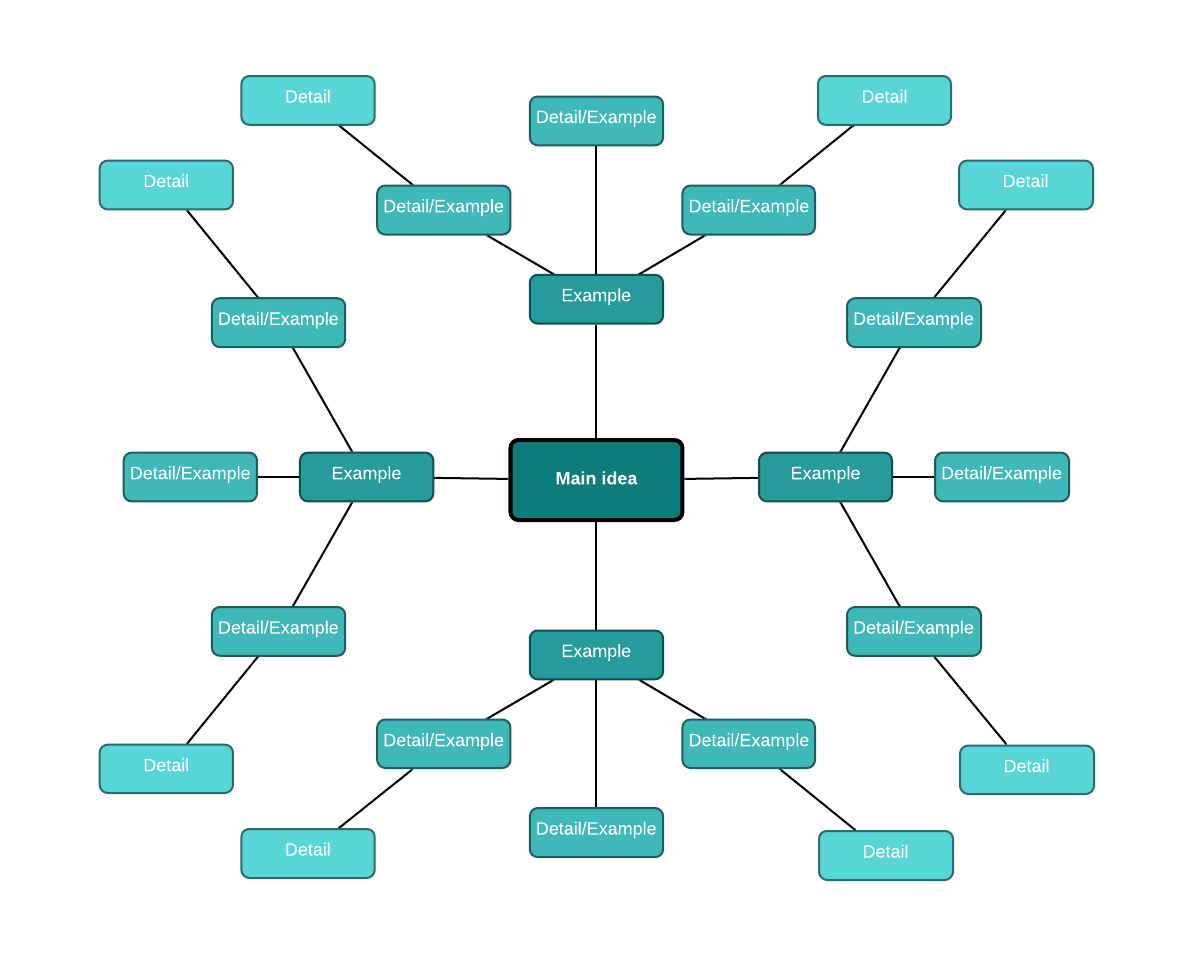
Mind mapping to solve a problem includes, but is not limited to, these relatively easy steps:
- In the center of the page, add your main idea or concept (in this case, the problem).
- Branch out from the center with possible root causes of the issue. Connect each cause to the central idea.
- Branch out from each of the subtopics with examples or additional details about the possible cause. As you add more information, make sure you are keeping the most important ideas closer to the main idea in the center.
- Use different colors, diagrams, and shapes to organize the different levels of thought.
Alternatively, you could use mind maps to brainstorm solutions once you discover the root cause. Search through Lucidchart’s mind maps template library or add the mind map shape library to quickly start your own mind map.
Create a problem-solving flowchart
A mind map is generally a good tool for non-linear thinkers. However, if you are a linear thinker—a person who thinks in terms of step-by-step progression making a flowchart may work better for your problem-solving strategy. A flowchart is a graphical representation of a workflow or process with various shapes connected by arrows representing each step.
Whether you are trying to solve a simple or complex problem, the steps you take to solve that problem with a flowchart are easy and straightforward. Using boxes and other shapes to represent steps, you connect the shapes with arrows that will take you down different paths until you find the logical solution at the end.

Flowcharts or decision trees are best used to solve problems or answer questions that are likely to come up multiple times. For example, Yoder Lumber , a family-owned hardwood manufacturer, built decision trees in Lucidchart to demonstrate what employees should do in the case of an injury.
To start your problem-solving flowchart, follow these steps:
- Draw a starting shape to state your problem.
- Draw a decision shape where you can ask questions that will give you yes-or-no answers.
- Based on the yes-or-no answers, draw arrows connecting the possible paths you can take to work through the steps and individual processes.
- Continue following paths and asking questions until you reach a logical solution to the stated problem.
- Try the solution. If it works, you’re done. If it doesn’t work, review the flowchart to analyze what may have gone wrong and rework the flowchart until you find the solution that works.
If your problem involves a process or workflow , you can also use flowcharts to visualize the current state of your process to find the bottleneck or problem that’s costing your company time and money.
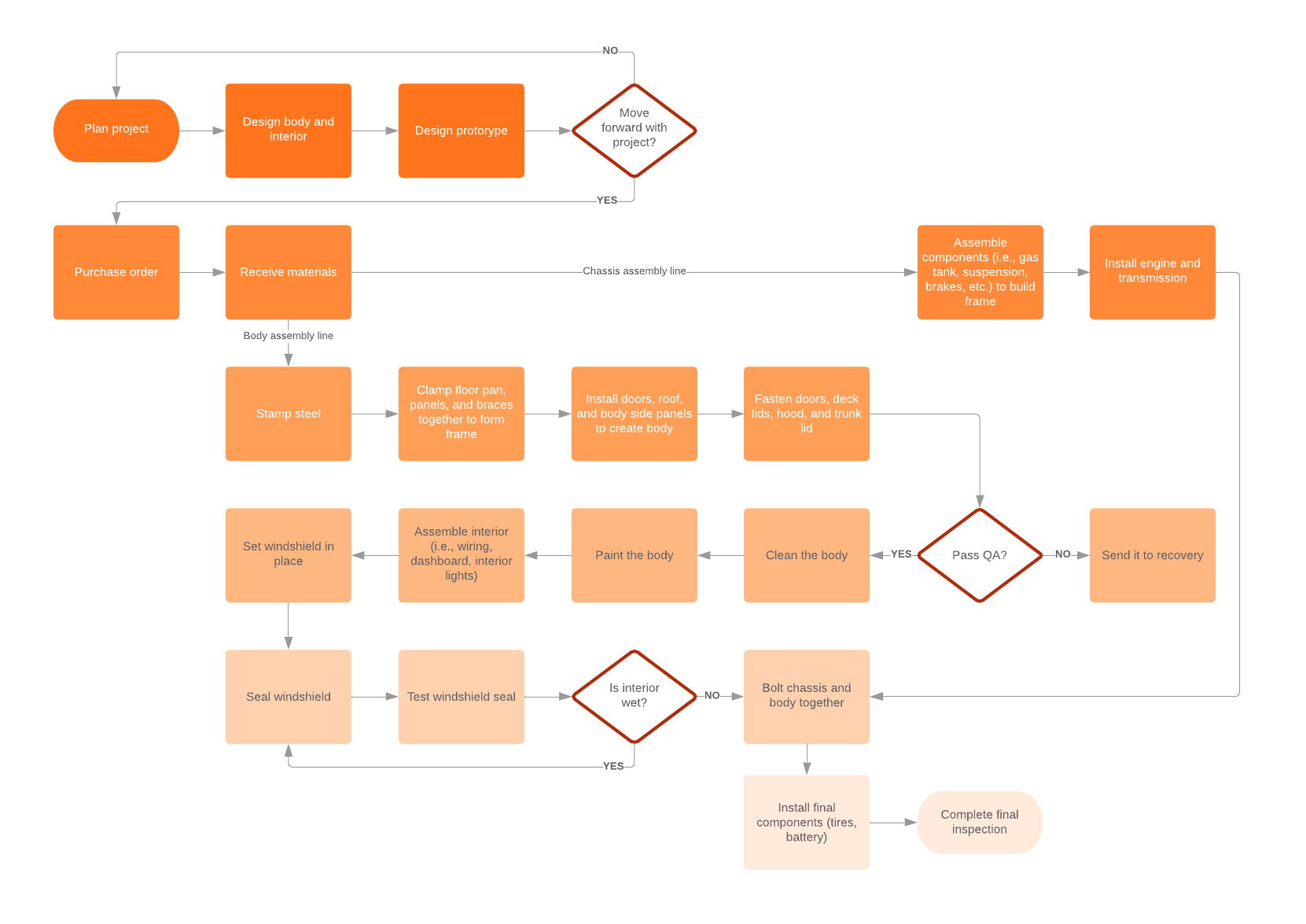
Lucidchart has a large library of flowchart templates to help you analyze, design, and document problem-solving processes or any other type of procedure you can think of.
Draw a cause-and-effect diagram
A cause-and-effect diagram is used to analyze the relationship between an event or problem and the reason it happened. There is not always just one underlying cause of a problem, so this visual method can help you think through different potential causes and pinpoint the actual cause of a stated problem.
Cause-and-effect diagrams, created by Kaoru Ishikawa, are also known as Ishikawa diagrams, fishbone diagrams , or herringbone diagrams (because they resemble a fishbone when completed). By organizing causes and effects into smaller categories, these diagrams can be used to examine why things went wrong or might go wrong.
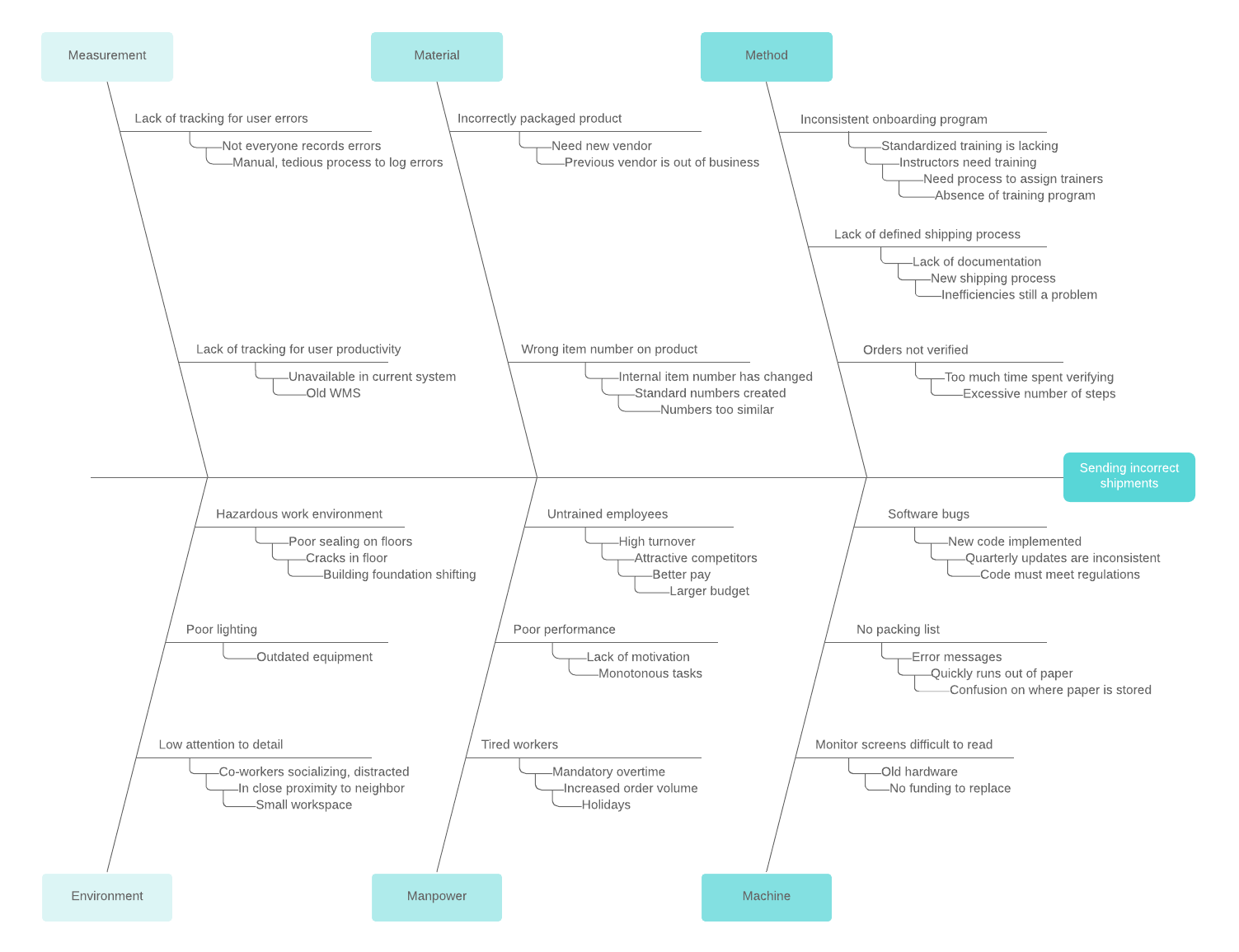
To perform a cause-and-effect analysis, follow these steps.
1. Start with a problem statement.
The problem statement is usually placed in a box or another shape at the far right of your page. Draw a horizontal line, called a “spine” or “backbone,” along the center of the page pointing to your problem statement.
2. Add the categories that represent possible causes.
For example, the category “Materials” may contain causes such as “poor quality,” “too expensive,” and “low inventory.” Draw angled lines (or “bones”) that branch out from the spine to these categories.

3. Add causes to each category.
Draw as many branches as you need to brainstorm the causes that belong in each category.
Like all visuals and diagrams, a cause-and-effect diagram can be as simple or as complex as you need it to be to help you analyze operations and other factors to identify causes related to undesired effects.
Collaborate with Lucidchart
You may have superior problem-solving skills, but that does not mean that you have to solve problems alone. The visual strategies above can help you engage the rest of your team. The more involved the team is in the creation of your visual problem-solving narrative, the more willing they will be to take ownership of the process and the more invested they will be in its outcome.
In Lucidchart, you can simply share the documents with the team members you want to be involved in the problem-solving process. It doesn’t matter where these people are located because Lucidchart documents can be accessed at any time from anywhere in the world.
Whatever method you decide to use to solve problems, work with Lucidchart to create the documents you need. Sign up for a free account today and start diagramming in minutes.
About Lucidchart
Lucidchart, a cloud-based intelligent diagramming application, is a core component of Lucid Software's Visual Collaboration Suite. This intuitive, cloud-based solution empowers teams to collaborate in real-time to build flowcharts, mockups, UML diagrams, customer journey maps, and more. Lucidchart propels teams forward to build the future faster. Lucid is proud to serve top businesses around the world, including customers such as Google, GE, and NBC Universal, and 99% of the Fortune 500. Lucid partners with industry leaders, including Google, Atlassian, and Microsoft. Since its founding, Lucid has received numerous awards for its products, business, and workplace culture. For more information, visit lucidchart.com.
Related articles

Sometimes you're faced with challenges that traditional problem solving can't fix. Creative problem solving encourages you to find new, creative ways of thinking that can help you overcome the issue at hand more quickly.
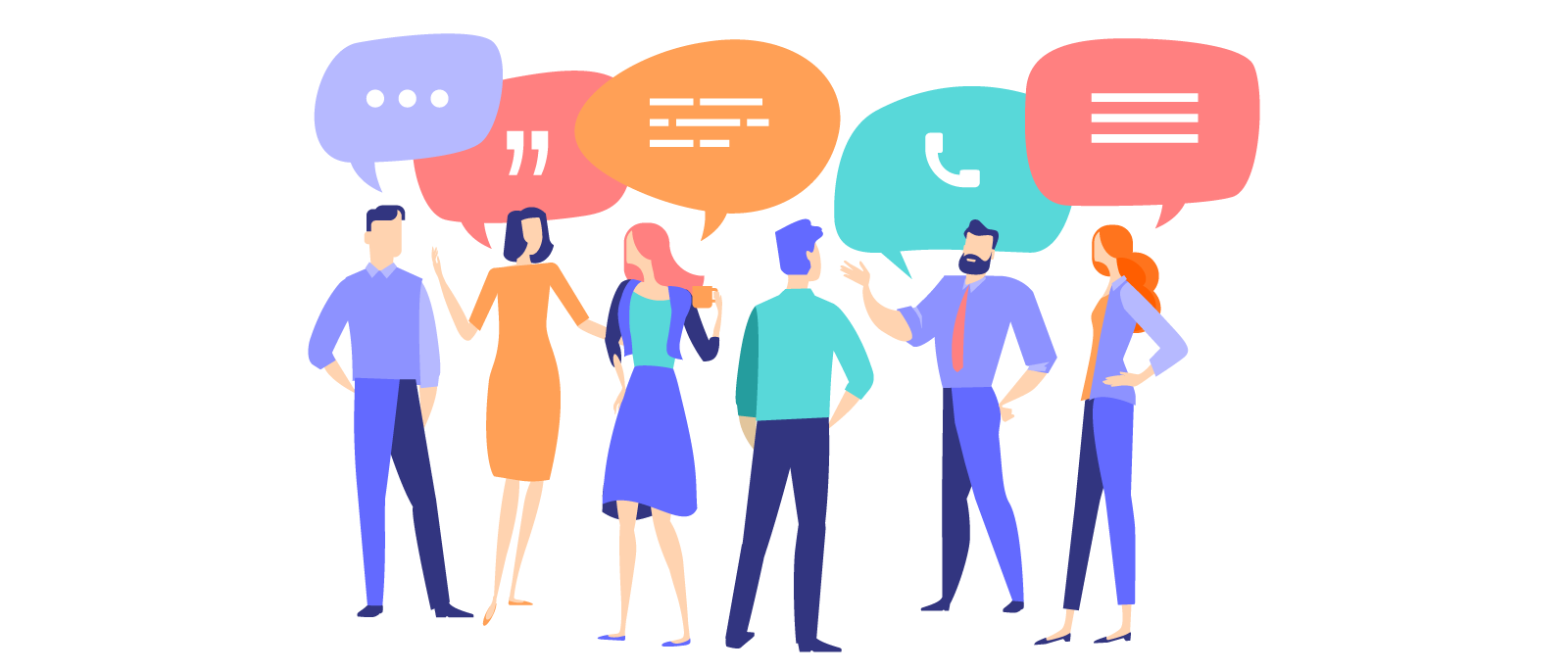
Dialogue mapping is a facilitation technique used to visualize critical thinking as a group. Learn how you and your team can start dialogue mapping today to solve problems and bridge gaps in knowledge and understanding (plus get a free template!).
Bring your bright ideas to life.
or continue with
We use essential cookies to make Venngage work. By clicking “Accept All Cookies”, you agree to the storing of cookies on your device to enhance site navigation, analyze site usage, and assist in our marketing efforts.
Manage Cookies
Cookies and similar technologies collect certain information about how you’re using our website. Some of them are essential, and without them you wouldn’t be able to use Venngage. But others are optional, and you get to choose whether we use them or not.
Strictly Necessary Cookies
These cookies are always on, as they’re essential for making Venngage work, and making it safe. Without these cookies, services you’ve asked for can’t be provided.
Show cookie providers
- Google Login
Functionality Cookies
These cookies help us provide enhanced functionality and personalisation, and remember your settings. They may be set by us or by third party providers.
Performance Cookies
These cookies help us analyze how many people are using Venngage, where they come from and how they're using it. If you opt out of these cookies, we can’t get feedback to make Venngage better for you and all our users.
- Google Analytics
Targeting Cookies
These cookies are set by our advertising partners to track your activity and show you relevant Venngage ads on other sites as you browse the internet.
- Google Tag Manager
- Infographics
- Daily Infographics
- Popular Templates
- Accessibility
- Graphic Design
- Graphs and Charts
- Data Visualization
- Human Resources
- Beginner Guides
Blog Business What is a Problem-Solving Flowchart & How to Make One
What is a Problem-Solving Flowchart & How to Make One
Written by: Danesh Ramuthi Aug 10, 2023
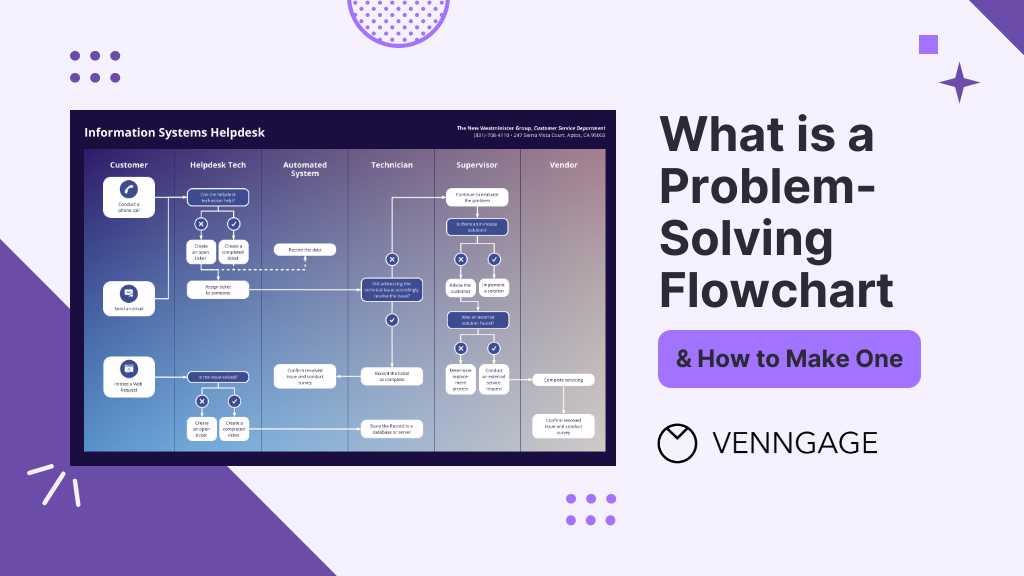
Problem-Solving Flowcharts, contrary to what many believe aren’t just aesthetic wonders — they’re almost like magical blueprints for troubleshooting those pesky problems that many of us face.
Flowcharts take business challenges and turn them into a navigable pathway. In this post, I will guide you on key aspects of problem-solving flowcharts such as what it is, the advantages of problem-solving flowcharts, how to create one and more.
Besides, you’ll also discover how to create problem-solving flowcharts with the help of Venngage’s Flowchart Maker.
And for those of you thinking, “I’m no designer, how can I create one?” worry not! I’ve got you covered. Just hop on Venggage’s Flowchart Templates and you’ll be charting your way to problem-solving glory in no time.
Click to jump ahead:
What are problem-solving flowcharts?
When to use problem-solving flowcharts, what are the advantages of flowcharts in problem-solving, what are the 7 steps of problem-solving flowcharts.
- 5 different types of problem-solving flowcharts
Best practices for designing effective problem-solving flowcharts
How to make a flowchart using venngage , problem-solving flowcharts faqs.
- Final Thoughts
Problem-Solving Flowcharts is a graphical representation used to break down problem or process into smaller, manageable parts, identify the root causes and outline a step-by-step solution.
It helps in visually organizing information and showing the relationships between various parts of the problem.
This type of flowcharts consists of different symbols and arrows, each representing different components or steps in the problem-solving process.
By following the flow of the chart, individuals or teams can methodically approach problem, analyze different aspects of it and come to a well-informed solution.
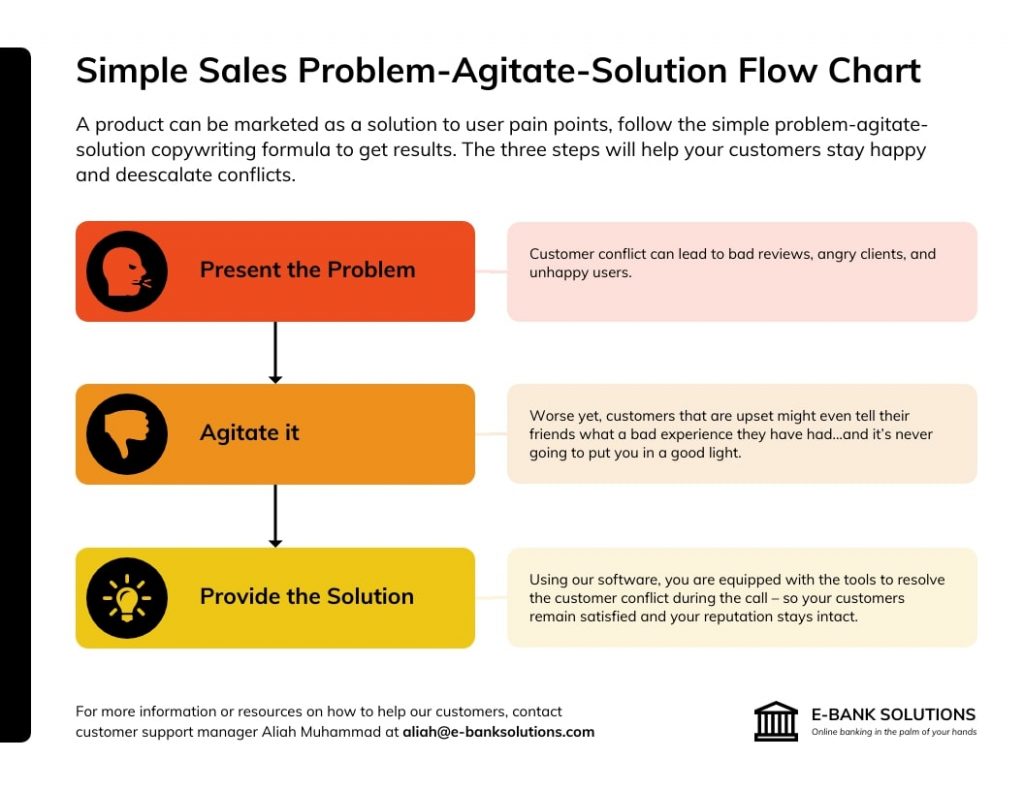
Problem-Solving Flowcharts is a versatile tool that can be used in various scenarios. Here’s when to consider utilizing one:
- Complex Problems: When faced with a multifaceted issue that involves multiple steps or variables, flowcharts can help break down the complexity into digestible parts.
- Team Collaboration: If you’re working with a team and need a common understanding of problem and its potential solutions then a flowchart provides a visual that everyone can refer to.
- Analyzing Processes: In a situation where you need to understand a particular process, whether it’s within a project or a part of regular operations then mapping it out in a flowchart can offer clarity.
- Decision Making: When various paths or decisions might be taken, a flowchart can outline the potential outcomes of each aiding in making an informed choice.
- Training and Onboarding: Flowcharts can be used in training materials to help new employees understand complex processes or procedures which makes the learning curve smoother.
- Identifying Root Causes: If you’re looking to identify the underlying causes of problem then a flowchart can facilitate a systematic approach to reaching the root of the issue.
Related: How to Use Fishbone Diagrams to Solve Complex Problems
Problem-solving flowcharts can offer several benefits to the users who are looking to solve a particular problem. Few advantages of flowcharts in problem solving are:
Visual Clarity
When you’re dealing with multifaceted problems or processes, words alone can make the situation seem even more tangled. Flowcharts distill these complexities into easily understandable visual elements.
By mapping out each phase or component of problem, flowcharts offer a bird’s eye view enabling individuals to grasp the bigger picture and the finer details simultaneously.
Sequential Representation
Flowcharts excel in laying out the sequence of events or actions. By indicating a clear starting point and illustrating each subsequent step, they guide users through a process or solution path methodically.
This linear representation ensures that no step is overlooked and each is executed in the right order.
Collaboration
Problem-solving often requires team effort and flowcharts are instrumental in fostering collaborative environments.
When a team is discussing potential solutions or trying to understand problem’s intricacies, a flowchart serves as a collective reference point.
It aids in synchronizing everyone’s understanding, minimizing miscommunications and promoting constructive discussions.
Read more about: Flowcharts Symbols and Meaning
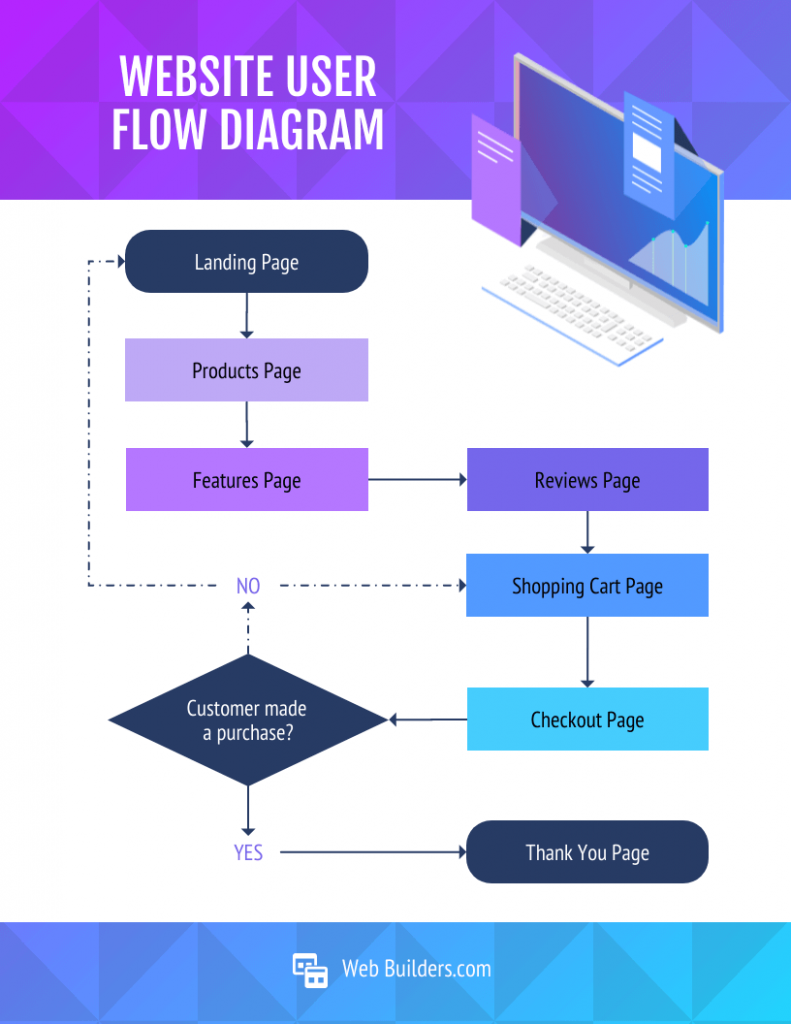
1. Define the Problem
Before anything else, it’s essential to articulate the problem or task you want to solve clearly and accurately. By understanding exactly what needs to be addressed you can ensure that subsequent steps align with the core issue.
2. Identify the Inputs and Outputs
Determine what inputs (such as data, information or resources) will be required to solve the problem and what the desired outputs or outcomes are. Identifying these factors will guide you in structuring the steps needed to reach the end goal and ensure that all necessary resources are at hand.
3. Identify the Main Steps
Break down the problem-solving process into its main steps or subtasks. This involves pinpointing the essential actions or stages necessary to reach the solution. Create a roadmap that helps in understanding how to approach the problem methodically.
4. Use Decision Symbols
In problem-solving, decisions often lead to different paths or outcomes. Using standard symbols to represent these decision points in the flowcharts allows for a clear understanding of these critical junctures. It helps visually present various scenarios and their consequences.
5. Add Descriptions and Details
A well-designed flowcharts is concise but clear in its labeling. Using arrows and short, descriptive phrases to explain what happens at each step or decision point ensures that the flowcharts communicates the process without unnecessary complexity.
6. Revise and Refine
Creating a flowcharts is not always a one-and-done process. It may require revisions to improve its clarity, accuracy or comprehensiveness. Necessary refinement ensures that the flowcharts precisely reflects the problem-solving process and is free from errors or ambiguities.
7. Use Flowchart Tool
While it’s possible to draw a flowcharts manually, using a flowcharts tool like Venngage’s Flowchart Maker and Venngage’s Flowchart Templates can make the process more efficient and flexible. These tools come with pre-designed templates and intuitive interfaces that make it easy to create, modify and share flowcharts.
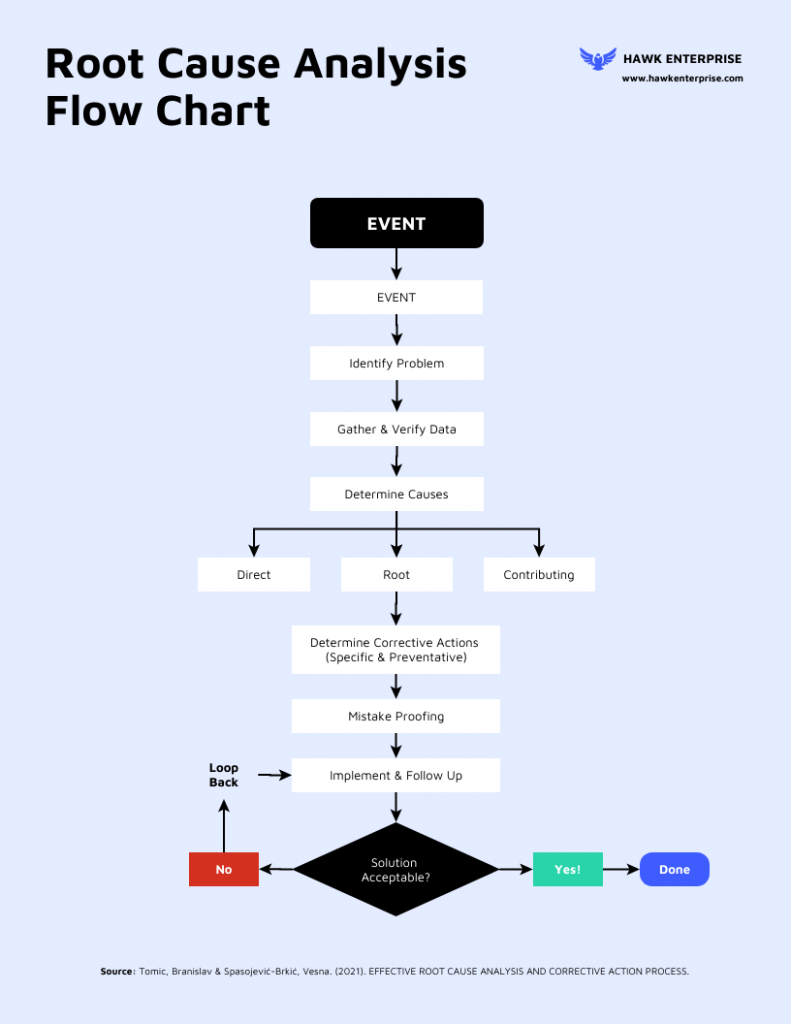
5 different types of problem-solving flowcharts
Let’s have a look at 5 most common types of flowcharts that individuals and organizations often use.
1. Process Flowchart s
A process flowcharts is a visual representation of the sequence of steps and decisions involved in executing a particular process or procedure.
It serves as a blueprint that showcases how different stages or functions are interconnected in a systematic flow and it highlights the direction of the process from its beginning to its end.
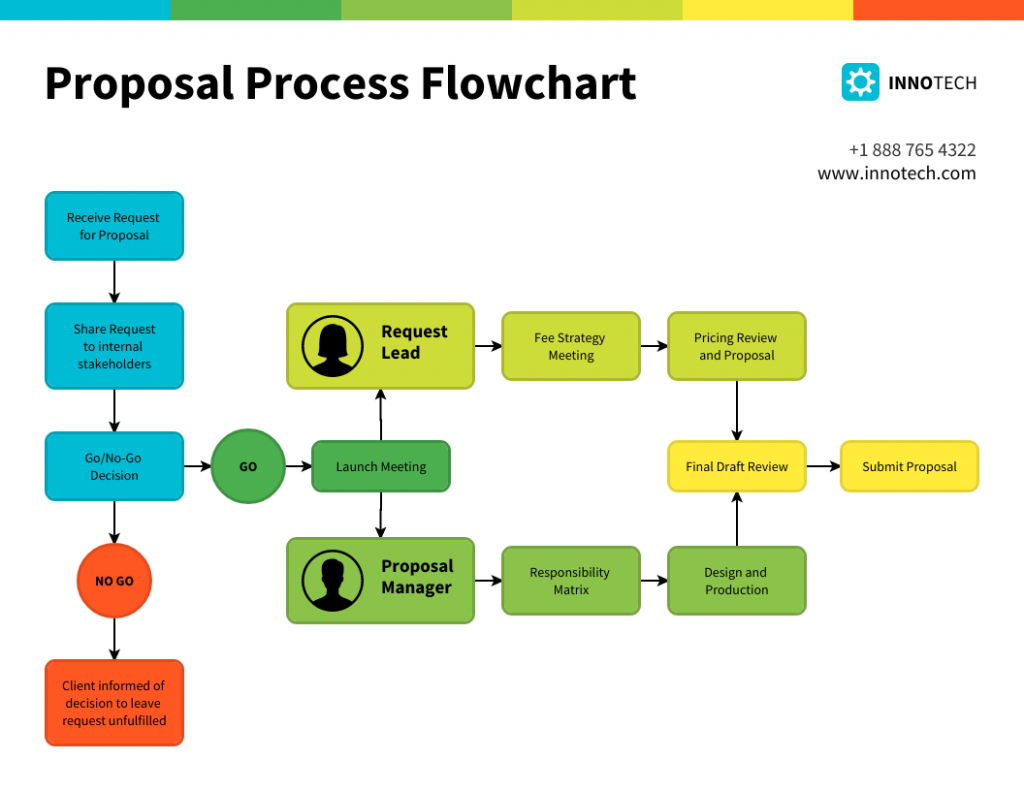
Process flowcharts are instrumental in training and onboarding, sales process , process optimization, documentation, recruitment and in any scenario where clear communication of a process is crucial.
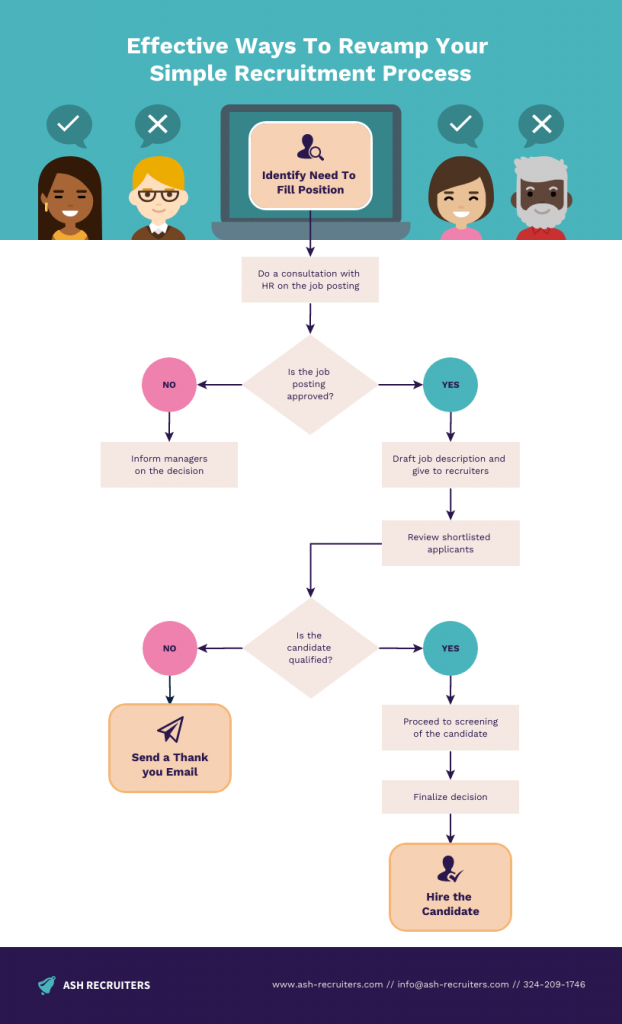
2. Flowcharts Infographic
A flowcharts infographic is a great way to showcase the process or a series of steps using a combination of graphics, icons, symbols and concise text. It aims to communicate complex information in a clear and easy-to-understand manner, making it a popular tool for conveying information, data and instructions in a visually engaging way.
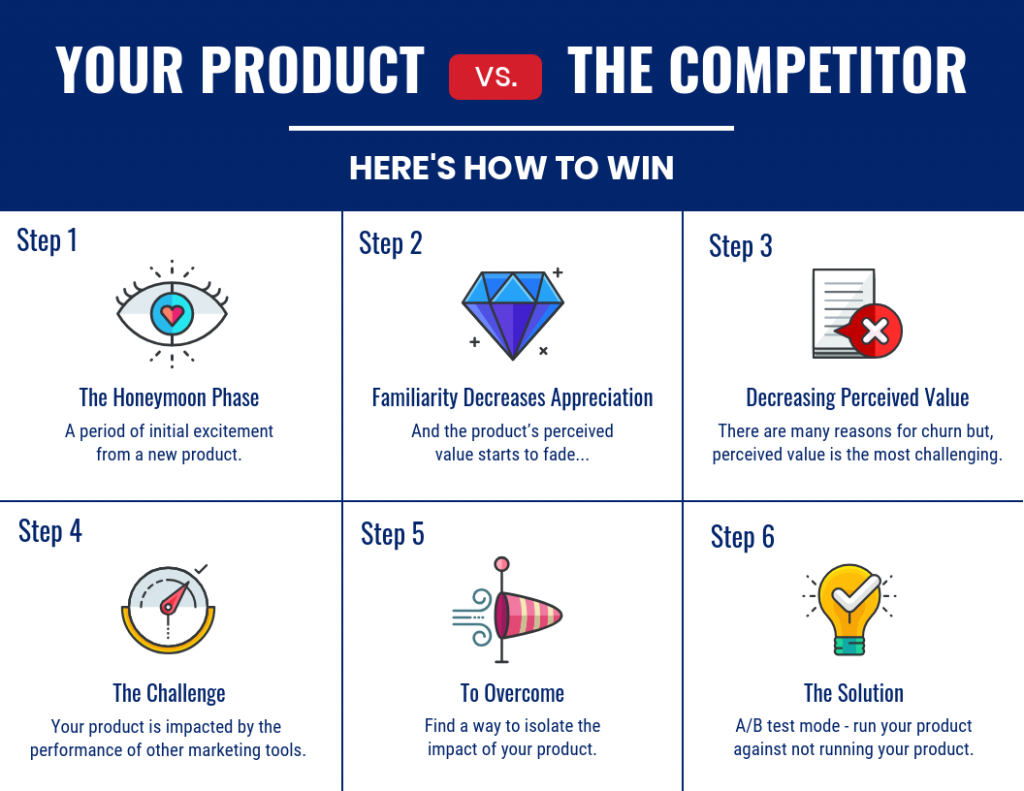
For example, you can use this flowchart to illustrate a health insurance process that visually explains the steps involved from finding a provider to paying for your healthcare provider.

3. Circular Flowcharts
A circular flowcharts is used to illustrate the flow of information, goods, services or money within a closed system or process. It gets its name from its circular shape, which emphasizes the continuous and cyclical nature of the flow.
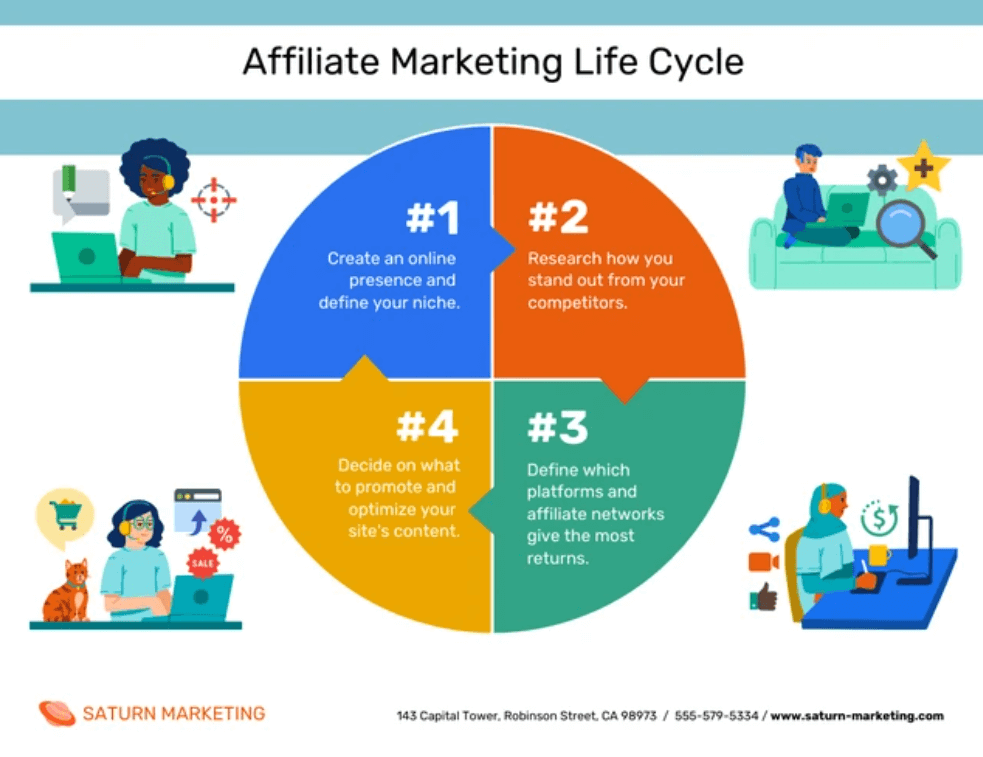
Circular flowcharts are widely used in various fields such as economics, business, engineering and process management to help visualize and understand complex systems.
In a circular flowcharts , elements are represented using various shapes and connected with arrows to indicate the direction of flow. The circular arrangement indicates that the process is ongoing and repeats itself over time.
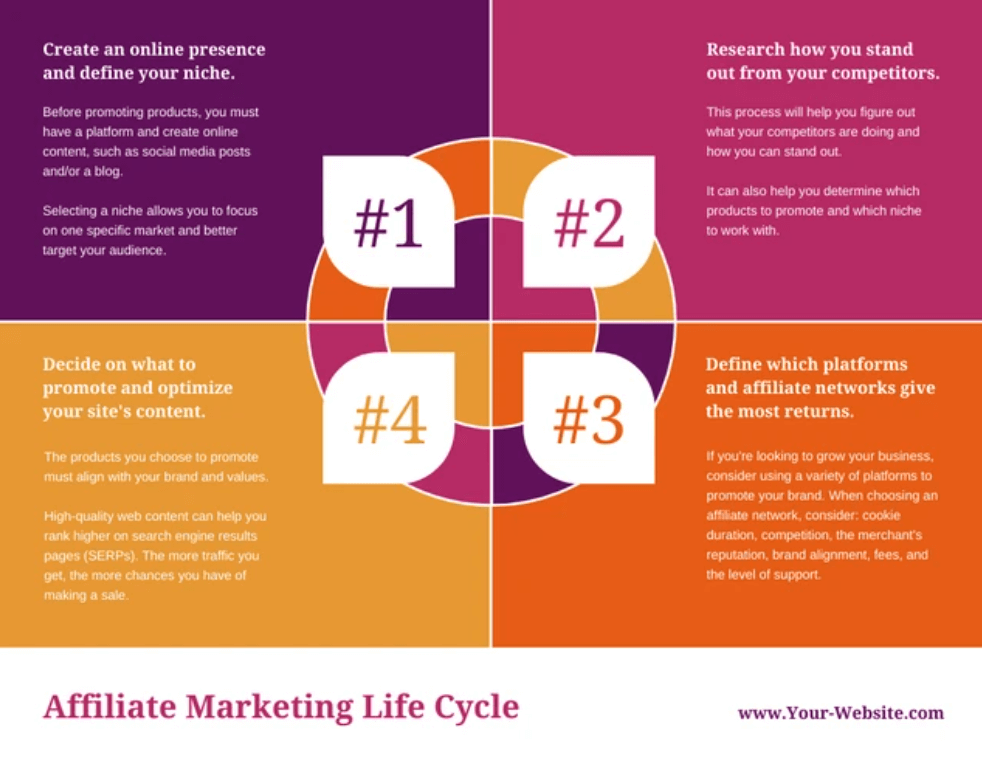
4. Swimlane flowcharts
Swimlane flowcharts , also known as cross-functional flowcharts are a specific type of flowchart that organizes the process flow into lanes or “swimlanes.”
Each lane represents a different participant or functional area involved in the process and the flowchart shows how activities or information move between these participants.
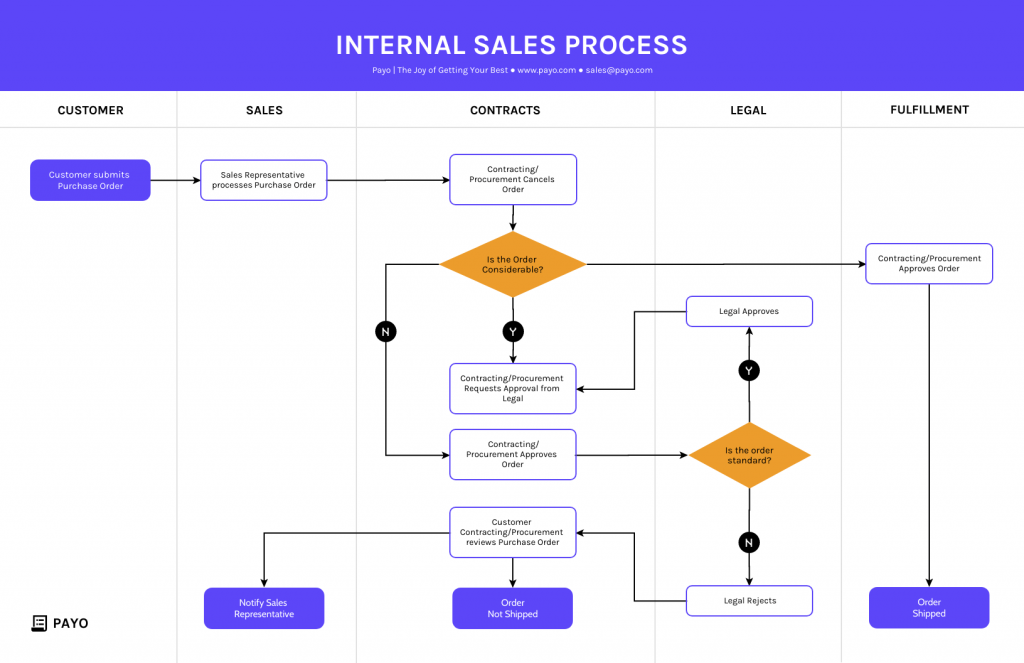
Swimlane flowcharts are particularly useful for illustrating complex processes that involve multiple stakeholders or departments.
In a swimlane flowcharts, the process is divided horizontally into lanes and each lane is labeled with the name of the department, person or role responsible for that part of the process. Vertically, the flowchart displays the sequence of steps or actions taken in the process.
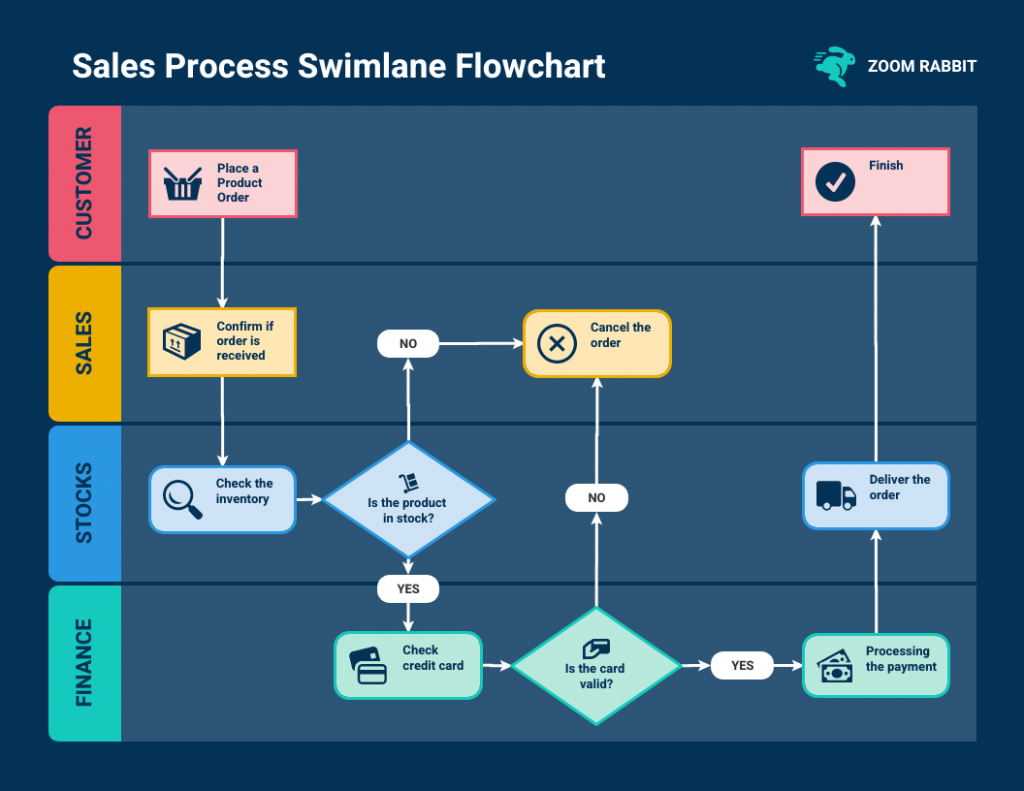
5. Decision Flowchart s
Decision flowcharts, also known as decision trees or flow diagrams are graphical representations that illustrate the process of making decisions or solving problems.
They are widely used in various fields such as computer science, business mapping , engineering and problem-solving scenarios.
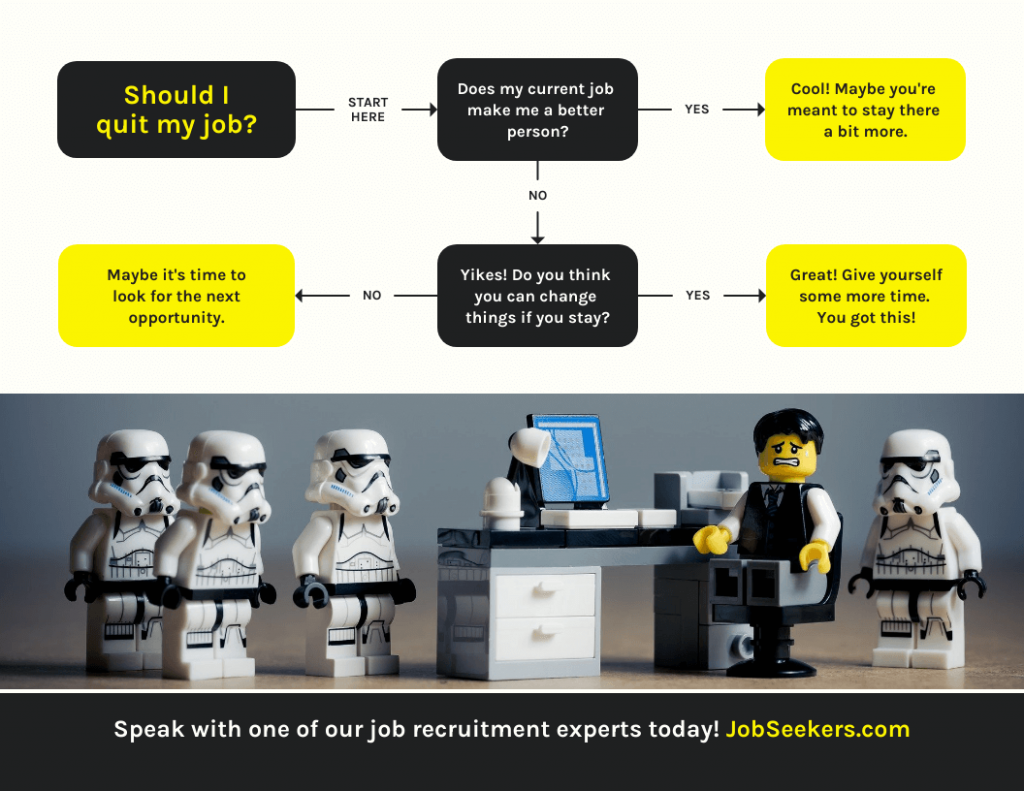
Decision flowcharts help break down complex decision-making processes into simple, sequential steps, making it easier to understand and follow.
A decision tree is a specialized flowchart used to visually represent the process of decision-making.
Businesses and other individuals can employ a decision tree analysis as a tool to aid in evaluating different options and the possible consequences associated with each choice.
Decision trees Infographics can be used to create a more nuanced type of flowchart that is more informative and visually appealing by combining a decision flowchart and the flowchart infographic.
Decision flowcharts are valuable tools for visualizing decision-making processes, analyzing complex problems and communicating them effectively to others.
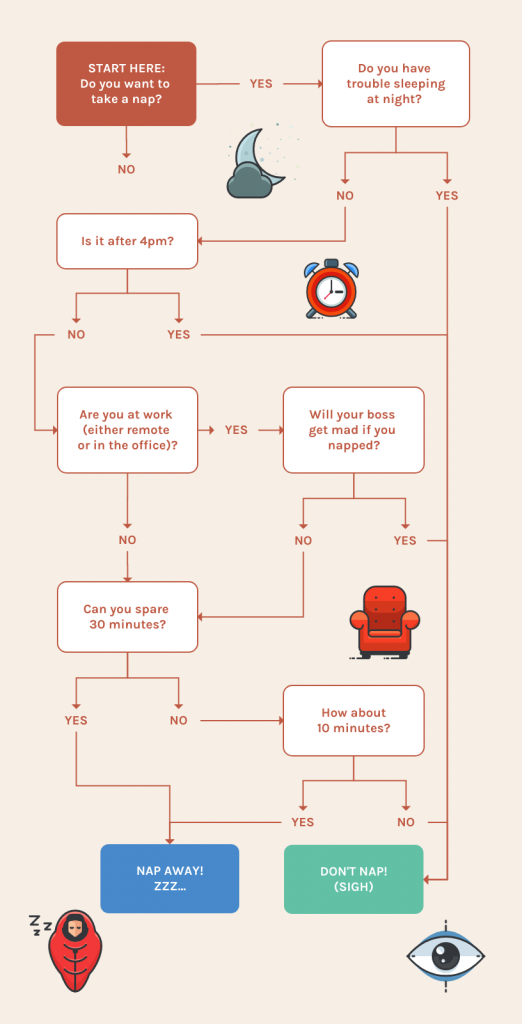
Designing effective problem-solving flowcharts involves careful consideration of various factors to ensure clarity, accuracy and usability. Here are some best practices to create efficient and useful problem-solving flowcharts:
- Understand the problem first & clearly define it
- Keep it simple
- Use standard & recognizable symbols
- Ensure that the flowchart follows a logical and sequential order
- Clearly label each decision point, action and outcome
- Verify the flowchart’s accuracy by testing it
- Clearly state the decision criteria that lead to different branches
- Provide context when the flowchart is part of a larger process or system
- Review and revise the flowchart
Creating problem-solving flowchart on Venngage is incredibly simple. All you have to do is:
- Start by Signing Up and Creating an Account with Venngage
- Choose a flowchart template that best suits your needs from our library.
- Start editing your flowchart by choosing the desired shapes, labels and colors.
- You can also enhance your flowchart by incorporating icons, illustrations or backgrounds all of which are readily available in our library.
- Once done, you will have 2 options to choose from, either sharing it online for free or downloading your flowchart to your desktop by subscribing to the Premium or Business Plan.
Is flowchart the representation of problem solutions?
Flowcharts are not the representation of problem solutions per se; rather, they are a visual representation of processes, decision-making steps and actions taken to arrive at a solution to problem.
What are the 3 basic structures of flowcharts?
3 Basic Structures of Flowcharts are:
- Sequence: Simplify Complexity
- Selection (Decision): Embrace Choices
- Repetition (Loop): Emphasize Iteration
What are the elements of a good flowchart?
A good flowchart should exhibit clarity and simplicity, using consistent symbols and labels to depict a logical sequence of steps. It should be readable, with appropriate white space to avoid clutter while eliminating ambiguity through well-defined decision criteria and paths.
Can flowcharts be used for both simple and complex problem-solving?
Yes, flowcharts can be used for both simple and complex problem-solving scenarios. Flowcharts are versatile visual tools that can effectively represent various processes, decision-making steps and problem-solving approaches regardless of their complexity.
In both cases, flowcharts offer a systematic and visual means of organizing information, identifying potential problems and facilitating collaboration among team members.
Can problem-solving flowcharts be used in any industry or domain?
Problem-solving flowcharts can be used in virtually any industry or domain. The versatility and effectiveness of flowcharts make them applicable to a wide range of fields such as Business and Management, Software Development and IT, Healthcare, Education, Finance, Marketing & Sales and a lot more other industries.
Final thoughts
Problem-solving flowcharts are a valuable and versatile tool that empowers individuals and teams to tackle complex problems with clarity and efficiency.
By visually representing the step-by-step process of identifying, analyzing and resolving issues, flowcharts serve as navigational guides simplifying intricate challenges into digestible parts.
With the aid of modern tools like Venngage’s Flowchart Maker and Venngage’s Flowchart Templates , designing impactful flowcharts becomes accessible to all while revolutionizing the way problems are approached and solved.
Discover popular designs

Infographic maker

Brochure maker

White paper online

Newsletter creator

Flyer maker

Timeline maker

Letterhead maker

Mind map maker

Ebook maker
Help | Advanced Search
Computer Science > Computation and Language
Title: comm: collaborative multi-agent, multi-reasoning-path prompting for complex problem solving.
Abstract: Large Language Models (LLMs) have shown great ability in solving traditional natural language tasks and elementary reasoning tasks with appropriate prompting techniques. However, their ability is still limited in solving complicated science problems. In this work, we aim to push the upper bound of the reasoning capability of LLMs by proposing a collaborative multi-agent, multi-reasoning-path (CoMM) prompting framework. Specifically, we prompt LLMs to play different roles in a problem-solving team, and encourage different role-play agents to collaboratively solve the target task. In particular, we discover that applying different reasoning paths for different roles is an effective strategy to implement few-shot prompting approaches in the multi-agent scenarios. Empirical results demonstrate the effectiveness of the proposed methods on two college-level science problems over competitive baselines. Our further analysis shows the necessity of prompting LLMs to play different roles or experts independently. We release the code at: this https URL
Submission history
Access paper:.
- HTML (experimental)
- Other Formats
References & Citations
- Google Scholar
- Semantic Scholar
BibTeX formatted citation
Bibliographic and Citation Tools
Code, data and media associated with this article, recommenders and search tools.
- Institution
arXivLabs: experimental projects with community collaborators
arXivLabs is a framework that allows collaborators to develop and share new arXiv features directly on our website.
Both individuals and organizations that work with arXivLabs have embraced and accepted our values of openness, community, excellence, and user data privacy. arXiv is committed to these values and only works with partners that adhere to them.
Have an idea for a project that will add value for arXiv's community? Learn more about arXivLabs .

IMAGES
VIDEO
COMMENTS
The problem solving agent follows this four phase problem solving process: Goal Formulation: This is the first and most basic phase in problem solving. It arranges specific steps to establish a target/goal that demands some activity to reach it. AI agents are now used to formulate goals. Problem Formulation: It is one of the fundamental steps ...
Problem formulation ♦ Example problems ♦ Basic search algorithms Chapter 3 2 Problem-solving agents Restricted form of general agent: function Simple-Problem-Solving-Agent (percept) returns an action static: seq, an action sequence, initially empty state, some description of the current world state goal, a goal, initially null problem, a ...
The problem-solving agent performs precisely by defining problems and several solutions. So we can say that problem solving is a part of artificial intelligence that encompasses a number of techniques such as a tree, B-tree, heuristic algorithms to solve a problem. We can also say that a problem-solving agent is a result-driven agent and always ...
Problem-solving agents Restricted form of general agent: function Simple-Problem-Solving-Agent(percept) returns an action static: seq, an action sequence, initially empty state, some description of the current world state goal, a goal, initially null problem, a problem formulation state Update-State(state,percept) if seq is empty then
CPE/CSC 580-S06 Artificial Intelligence - Intelligent Agents Well-Defined Problems exact formulation of problems and solutions initial state current state / set of states, or the state at the beginning of the problem-solving process must be known to the agent operator description of an action state space set of all states reachable from the ...
The problem solving agent chooses a cost function that reflects its own performance measure. The solution to the problem is an action sequence that leads from initial state to goal state and the ...
Problem Formulation • Initial state: S 0 • Initial configuration of the problem (e.g. starting position in a maze) • Actions: A • The different ways in which the agent can change the state (e.g. moving to an adjacent position in the maze) • Goal condition: G • A function that determines whether a state reached by a given sequence of actions constitutes a solution to the problem or not.
• Agent's strategy: Formulate, Search, andExecute - This is offline problem solving State-Space Diagrams • State-space description can be represented by a state-space diagram, which shows - States (incl. initial and goal) - Operators/actions (state transitions) - Path costs • Environment is observable • Environment is static
Problem Solving and Search Problem Solving • Agent knows world dynamics • World state is finite, small enough to enumerate • World is deterministic • Utility for a sequence of states is a sum over path The utility for sequences of states is a sum over the path of the utilities of the individual states.
Chapter 3. Outline. Chapter3 1. Problem-solving agents. function Simple-Problem-Solving-Agent(percept) returns an action static: seq, an action sequence, initially empty state, some description of the current world state goal, a goal, initially null problem, a problem formulation. state←Update-State(state,percept)
Problem solving as goals and subgoals. On a standard account in AI of problem solving (see [1] for the most evolved version), problem solving is a means-ends, or a subgoaling, process. The agent uses general and domain knowledge to decompose the goal into subgoals, subgoals into further subgoals, and so on, as needed.
Problem Solving Agents: Approach •General approach is called "search" •Input: environment, start state, goal state •Env.: states, actions, transitions, costs, goal test •Output: sequence of actions •Actions are executed after planning •Percepts are ignored when executing plan Nathan Sturtevant Introduction to Artificial ...
1. Topic 3: Intelligent Agents. (Lecture notes by W.Hsu are used) Today's Reading: Chapter 2, Russell and Norvig or/and Luger 1.1.4. Intelligent Agent (IA) Design • Shared requirements, characteristics of IAs • Methodologies - Software agents - Reactivity vs. state - Knowledge, inference, and uncertainty.
Problem Solving Agents and Uninformed Search An intelligent agents act to increase their performance measure. Some do this by adopting a goal. Four general steps in problem solving: Goal formulation - deciding on what the goal states are - based on current situation and agent's performance measure - What are the successful world states
Overall, multi-agent systems are a powerful tool in artificial intelligence that can help solve complex problems and improve efficiency in a variety of applications. Hierarchical Agents These agents are organized into a hierarchy, with high-level agents overseeing the behavior of lower-level agents.
Photo by hobijist3d on Unsplash. There are four basic kinds of agent programs that embodies the principles underlying almost all the intelligent systems. Simple Reflex Agents. Model-based Reflex ...
Among the community, there is a current debate on whether single or multi-agent systems are best suited for solving complex tasks. While single agent architectures excel when problems are well-defined and feedback from other agent-personas or the user is not needed, multi-agent architectures tend to thrive more when collaboration and multiple distinct execution paths are required.
Problem Solving Agent An agent that tries to come up with a sequence of actions that will bring the environment into a desired state. Search The process of looking for such a sequence, involving a systematic exploration of alternative actions. Searching is one of the classic areas of AI. Problems. A problem is a tuple $(S, s, A, \rho, G, P)$ where
A wide range of problems in AI—including, among others, theorem proving, game playing, planning, and learning—can be formulated at an abstract level as essentially search problems. As noted above, representation is a key issue in problem solving. Consider 17 sticks arranged in 6 squares as shown in Figure 1.
Fig. 9: A diagram of the Reflexion agent's recursive mechanism: A short-term memory logs earlier stages of a problem-solving sequence. ... An agent replicating this problem-solving strategy is ...
ROHINI COLLEGE OF ENGINEERING AND TECHNOLOGY CS34 91-ARTIFICIAL INTELLIGENCE AND MACHINE LEARNING Steps performed by Problem-solving agent Goal Formulation: It is the first and simplest step in problem-solving. It organizes the steps/sequence required to formulate one goal out of multiple goals as well as actions to
To perform a cause-and-effect analysis, follow these steps. 1. Start with a problem statement. The problem statement is usually placed in a box or another shape at the far right of your page. Draw a horizontal line, called a "spine" or "backbone," along the center of the page pointing to your problem statement. 2.
Problem-Solving Flowcharts is a graphical representation used to break down problem or process into smaller, manageable parts, identify the root causes and outline a step-by-step solution. It helps in visually organizing information and showing the relationships between various parts of the problem. This type of flowcharts consists of different ...
Large Language Models (LLMs) have shown great ability in solving traditional natural language tasks and elementary reasoning tasks with appropriate prompting techniques. However, their ability is still limited in solving complicated science problems. In this work, we aim to push the upper bound of the reasoning capability of LLMs by proposing a collaborative multi-agent, multi-reasoning-path ...